
Smart cities, made possible by TM One’s Hyperconnected Ecosystem, is set to revolutionise and positively change the lives of Malaysians. With TM One 5G, we are taking smart cities to the next level, accelerating the transformation of Malaysia into a digital nation, by emphasising the needs of businesses and communities in our smart city solutions.
TM One works with state and local governments in a long-term partnership, prioritising the right solutions based on the needs of the community. Progressively, we build upon the insights to roll out more smart solutions as we grow towards a fully integrated smart city.
In SS15 Subang Jaya, TM One works with Majlis Perbandaran Subang Jaya (MPSJ) to enrich the community’s lives with TM One 5G and Smart Services, by bringing the 5G experience through smart services to the people there, enabling MPSJ to realise its vision for the area to become a Vibrant City by 2030.

Uncontrolled parking issues within commercial area causing congestion and uncollected parking fees.
Traffic congestion resulting from heavy flow and inefficient traffic management.
Safety and security problems due to lack of monitoring abilities.
Highly discerning customers in a tough and competitive retail environment posing challenges to business owners.
Wastage due to inaccurate water meter reading and inability to track pipe leakages
Alleviate traffic congestion with a smart traffic light system powered by IoT, AI, and 5G that automatically adapts to traffic conditions for smoother commuting journey
Ensure safety of the people especially at crime-prone area with high-definition security cameras, powered by IoT, AI, and 5G.
Collect and analyse data from water meters to monitor usage and water quality, leading to reduction in water leakage and wastage
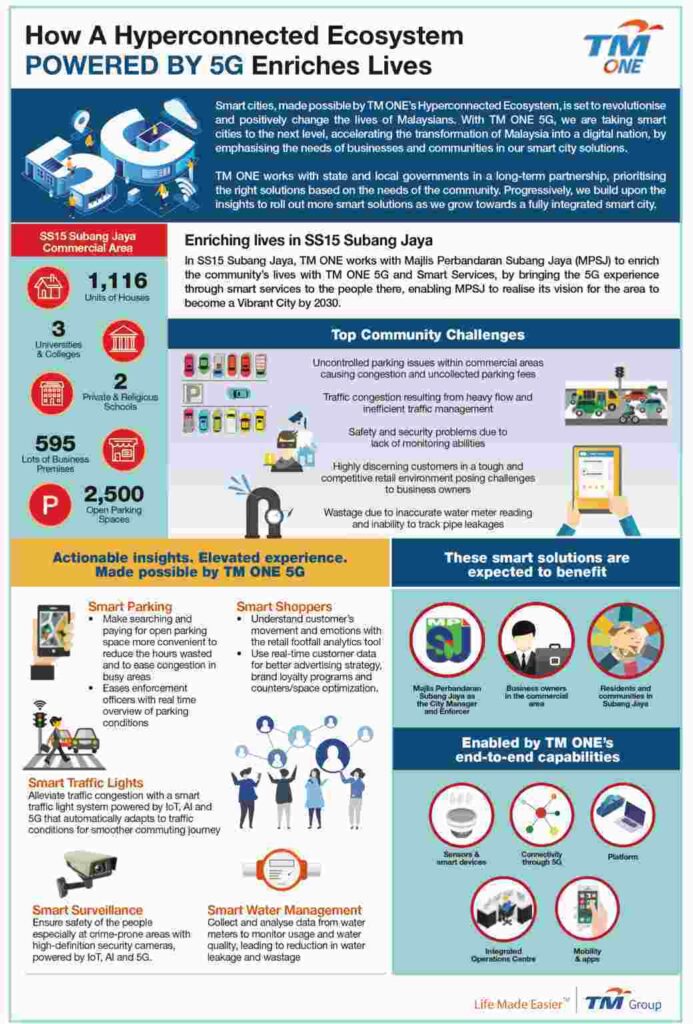
I’ve moderated and sat in a fair number of fintech panel discussions over the years, a question that is brought up 9 out of 10 in every discussion is “What do you think are the key technology shaping fintech and banking in Malaysia?” and some variation of that same question.
If you’re like me who have attended too many fintech conferences, the answers will come as no surprise to you. The common answers are often; blockchain, artificial intelligence, open banking, virtual banking, and mobile payment.
Yet despite the importance of electronic Know Your Customer or eKYC and digital identity, very rarely you will hear any panellists in these conferences pointing out the impact of eKYC and digital identity in Malaysia’s banking and fintech ecosystem.
A study conducted by Mckinsey shows that there is a potential cost reduction of 90% in customer onboarding cost by enabling eKYC. The same study also indicated that digital identity could potentially enable 1.7 billion of the unbanked population to gain access to financial services.
A separate study by Refinitiv further breaks down the cost of KYC, much of the cost is largely attributed to staffing costs, which supports the idea that digitising the KYC process could significantly reduce the cost of customer onboarding.
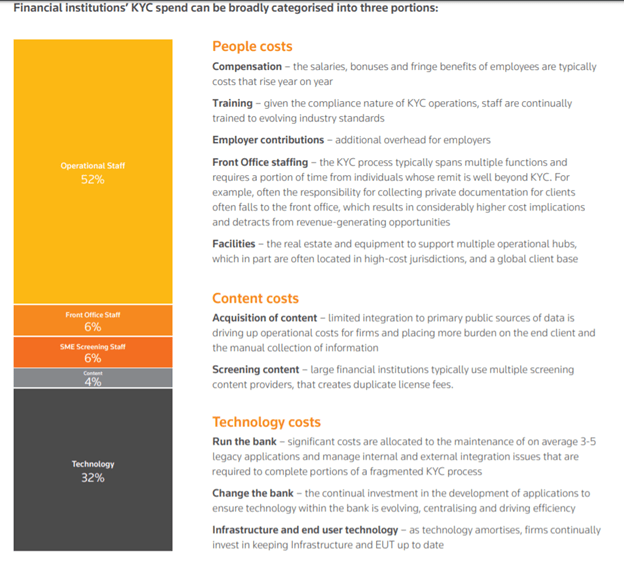
It is a fact that has not gone unnoticed by Bank Negara Malaysia, in 2017 the regulator issued the eKYC framework for remittance companies and subsequently in 2019, a similar draft was issued for money changers.
Though there is development particularly within the Money Services Business (MSB) space, the regulator has not made any formal announcement on eKYC guidelines for the wider financial services sector.
There have been some nuggets of information though, during the MyFintech Week earlier this year, BNM’s financial development and innovation department director Suhaimi Ali mentioned that there are currently 11 banks trialing eKYC solutions.

Suhaimi did not disclose further the nature of the trial nor the details of the provider but credit reporting agency CTOS who is also present at the event shared in a separate session that they are trialing their eKYC project with several banks and they are looking to enter Bank Negara Malaysia sandbox.
Meanwhile, Muhammad Ghadaffi Mohd Tairobi, the Vertical Director for Banking, Financial Services & Insurance of TM One acknowledges that there are many benefits of Digital ID from a business perspective, as it will save time and money by reducing it to over the counter transactions, increasing productivity and enabling seamless and digital driven experiences for customers. He believes that eKYC then becomes an important process for the banks to perform customer on-boarding faster compared to traditional way of over the counter.
However, Ghadaffi’s key concern was on managing digital ID fraud. He said “This is why TM One eKYC solution is in compliant with Risk Management in Technology (RMiT) and Data Residency and Sovereignty requirements to assist the BFSI industry in the successful implementation of this initiative”.
Written by: Vincent Fong, Fintech News
The world is at the advent of Industrial Revolution 4.0. Internet of Things, robotics, artificial intelligence and machine learning are all revolutionising the way businesses and cities operate. Whether in communities or industries, real time data collected from devices, machines and wearables produce important insights to solve many business and societal challenges.
IMPROVING QUALITY OF LIVES
With Connected City and Living Solutions
Reduce hours in traffic with Smart Traffic Lights, save electricity consumption with Smart Street Lights, know parking availability with Smart Parking.
Today’s city planners, township developers, and communities are working together to build better and connected cities using advanced technologies.
ADDRESSING INDUSTRIAL CHALLENGES
With Connected Utilities Solutions
Capture water data with Smart Water Management, featuring near-real time pipeline monitoring, water quality and water level sensing, to optimise and safeguard water supply.
With Connected Agriculture Solutions
Collect, analyse and automate real-time data on soil acidity, water level and other farming parameters to produce quality agricultural products with Smart Agriculture.
With Connected Manufacturing Solutions
Produce better output and improve delivery time with Fleet Management and Connected Workforce. Reduce maintenance cost with Smart Forklift and Smart Genset.
INTEGRATE SEAMLESSLY, FOR A DIGITAL MALAYSIA
With TM One,
Integrated Operations Centre offers managed services from monitoring, tracking and alerting any incidents.
Cloud Services, hosted at TM One’s Twin Core Data Centre collect, store, process and analyse data real-time and seamlessly, powered with Artificial Intelligence to produce valuable insights in various industries, such as agriculture, manufacturing, real estate, utilities and healthcare.
As the enterprise and public sector business solutions arm of Telekom Malaysia Bhd (TM), TM ONE’s Hyperconnected Ecosystem is capable of digitising the utility sector in the most cost efficient and effective way, to address business challenges and achieve sustainable growth.
One of the major challenges in the water sector is non-revenue water (NRW), the impact of which is colossal. TM ONE helps the industry in addressing this challenge, and subsequently increasing accessibility of clean water to the public with its end-to-end Internet of Water solution.
NRW = Volume of water put into distribution system – volume billed to customers

How can NRW be addressed through Smart Water Solutions?

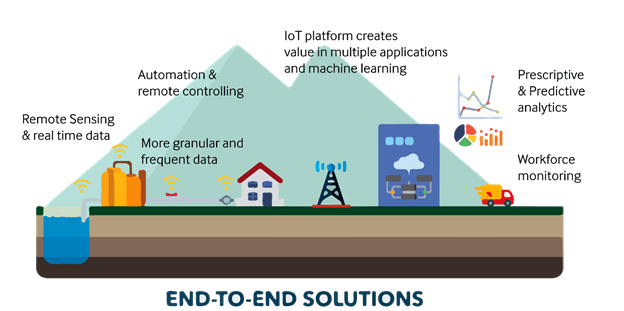
Sensors, connectivity and big data analytics are common technologies and means less when M2M (machine-to-machine) does not talk to one another and operates seamlessly. With TM ONE’s Hyperconnected Ecosystem, businesses are ready for digital transformation, enhancing user experience while growing profits and reducing costs.
Financial Technology, or FinTech is the new technology and innovation that aims to compete with traditional financial methods in the delivery of financial services. The Banking, Financial Services and Insurance (BFSI) industry is being redefined with the evolution of FinTech. Despite being new, the growth rate is phenomenal and it is expected to remain so over the coming years.
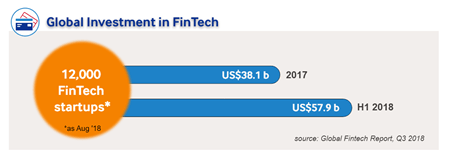
In Malaysia, payments, wallets, and cryptocurrency dominate the FinTech market, making up close to half of the market share.
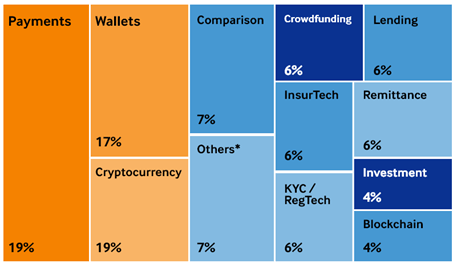
It is also making presence in Malaysia, although still in its infancy. The rise of digital consumer also contributes to the growth of FinTech in Malaysia.
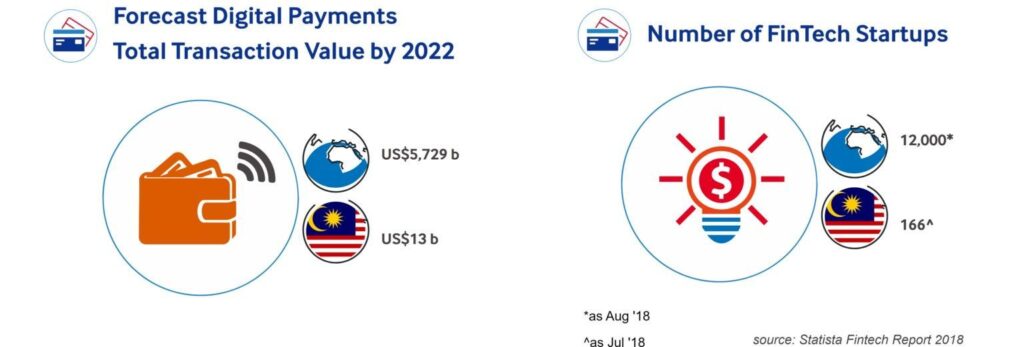
The are several factors driving the growth of FinTech in Malaysia
Robo-advisory is a platform where users input preferences, which are analysed to recommend the most suitable portfolio. This is done via an automated and algorithm-based allocation.
Bank deposits accounting for more than one third of total financial assets of Malaysians, indicating opportunities for new robo-advisory players to tap into this market.
The Securities Commission has also introduced the regulatory framework to facilitate Digital Investment Management, and with only one player currently in the Malaysian market, there is wide room for new players to come in. From 10,000 robo-advisory users in 2018 to have exponential growth to 60,200 robo-advisory users by 2022.
Insurance Technology, or InsurTech refers to the use of technology innovation with the purpose to reduce costs and create efficiency from the current traditional insurance industry practices.
The potential for the InsurTech is huge, where players can venture into the following areas:
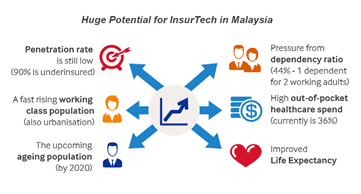
Regulatory Technology, or RegTech can be described as the use of technology to facilitate and enhance compliance in regulated industries.
Currently, 45% of Malaysia Fintech startups says that it is difficult to conform to local regulators.
With RegTech, provides solutions to ensure that users are up to date with the changing regulatory requirements by providing technologically advanced solutions to the increasing demands of compliance within the financial industry.
It helps to effectively and efficiently analyse the regulatory environment using algorithm, AI and ML.
RegTech activities include:
Artificial Intelligence (AI) is the creation of intelligent machines that perform various cognitive tasks such as speech recognition, learning, planning and problem solving.
Machine Learning (ML) is one application of AI which gives machines the ability to learn and adjust new information without being explicitly programmed or monitored.
Deep Learning (DL) is another application which uses ML techniques to imitate human decision-making.
Applications of AI technology in BFSI industry include:
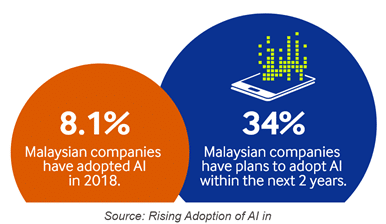
Infographic View
Learning with robots is a relational experience, one that provides a very different approach than learning with the help of a computer or other electronic devices. The attention for body and movement through robotics stimulates development of basic skills and capacity for learning. Visuo-spatial, visuo-motory and social skills are essential for students with Special Educational Needs.
Robotics technology can help teachers in providing emotional assistance to students with special needs, as robots are non-judgmental and patient in their interaction. Such assistance will then motivate these students to learn and engage better. The usage of robotics is also in-line with the Ministry of Education’s Program Pendidikan Khas Integrasi (PPKI) philosophy, in supporting students with special needs to become competent, independent and productive individuals.
A research by the University of Birmingham showed that usage of humanoid robots improved children’s basic learning skills. Robots can be used in many activities. For example, in memory games, a robot that simulates a child’s behaviour can encourage students to imitate the robot’s movements. Thus, helping them become engaged and motivated with learning. The research also noted that, students tend to find robots charming and non-threatening, making it an excellent therapy buddy and helping with the development of social skills.

Students with autism often experience social drawbacks as they do not make eye contact and have trouble noticing social cues such as a smile or a grimace. These cause them to struggle when expressing themselves. Generally, robots provide a safe and predictable playful environment for children with autism to enjoy and interact (Dautenhahn and Werry, 2004); moreover, the use of robots as therapy tools has shown positive impact in learning process.
There is a positive receptiveness from autistic students towards robots, as they know robots are non-judgmental. Students no longer worry about discriminated by their behavior or inadequacies. Studies have shown that humanoid robots can help autistic children develop the social skills they need. In studies done to help children with autism learn social skills, therapists have used robots and behavioral analysis that utilizes play to increase children's desire to learn good social behaviour

TM ONE recently showcased the potential of robotics as an effective educational tool in special needs education, at an event for students with Special Educational Needs under the Program Pendidikan Khas Integrasi (PPKI) at SMK Batu Muda, Kuala Lumpur in Daerah Sentul on 30th April 2019. This event was part of Program Transformasi Minda Anak Muda by Malaysia’s Ministry of Education (MOE), aimed to encourage the involvement and interest of students by introducing various educational opportunities.
The 80 participating students under PPKI at SMK Batu Muda are diagnosed with autism and attention issues, students with special abilities, slow learners, Down Syndrome, blindness, deafness and others. The students had the opportunity to meet, touch and interact with the robots. They were excited to approach and even dance with the robots, and when asked if they would like the robots to teach them in class, all the students cheered and replied positively.
Dr Habibah Abdul Rahim, Deputy Director General of Education at the MOE together with Dr Ahmad Rafee Che Kassim, Director of Education Planning and Research Department (EPRD) were present along with TM ONE Education Solutions team, brought excitement to these special children. Joining them was Feilina Feisol, Chairman of The National Autism Society of Malaysia (NASOM), witnessing how students with autism and attention issues react to robotics.
TM ONE presented three different types of robots during the event.

NAO is a humanoid robot normally used as an education-teaching tool and is especially helpful in assisting teachers dealing with special need students. During this event, we saw children with autism interacting with the NAO in a different way compared to their normal interactions with other people. Humanoid robots are especially effective at teaching socialization skills to autistic children, by acting as peers and aiding them with the necessary social skills. This type of humanoid robotics is suitable for special need students as they can move, dance, recognise, listen to and communicate with the students.
The students were also receptive to SANBOT, a smart mobile robot fitted with an ergonomic design blended with technology. The students were excited to explore SANBOT’s touch panel and to communicate with it. SANBOT is a brilliant tutor and assistant for these students, as its cloud-based services and information platform enable self-learning capability.
Also featured was the KINOVA Robotic Arm, which was mounted to a wheelchair to help students with physical disabilities achieve better movement. The KINOVA robotic arm demonstrated how robotics can help people with special abilities to participate productively in driving the digital economy.
TM ONE will continue its efforts with innovative solutions to support the education sector and schools nationwide. Robotics is not intended to replace human teaching, but to assist and magnify the effectiveness of teaching and learning. The use of robotics in special education enables active learning, inclusiveness and sustainable development of the specially-abled community in supporting Industrial Revolution 4.0.
